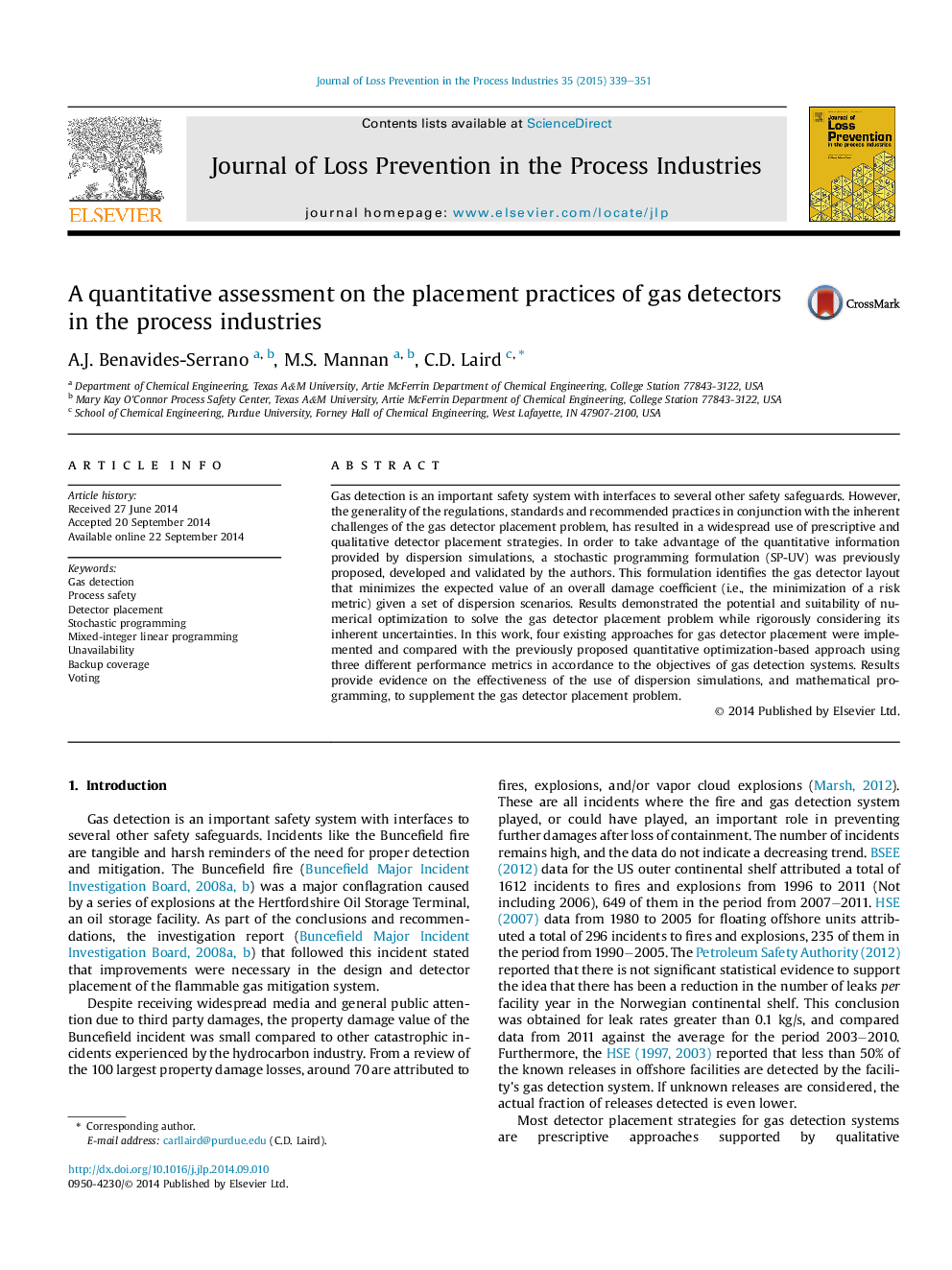| Article ID | Journal | Published Year | Pages | File Type |
|---|---|---|---|---|
| 6973384 | Journal of Loss Prevention in the Process Industries | 2015 | 13 Pages |
Abstract
Gas detection is an important safety system with interfaces to several other safety safeguards. However, the generality of the regulations, standards and recommended practices in conjunction with the inherent challenges of the gas detector placement problem, has resulted in a widespread use of prescriptive and qualitative detector placement strategies. In order to take advantage of the quantitative information provided by dispersion simulations, a stochastic programming formulation (SP-UV) was previously proposed, developed and validated by the authors. This formulation identifies the gas detector layout that minimizes the expected value of an overall damage coefficient (i.e., the minimization of a risk metric) given a set of dispersion scenarios. Results demonstrated the potential and suitability of numerical optimization to solve the gas detector placement problem while rigorously considering its inherent uncertainties. In this work, four existing approaches for gas detector placement were implemented and compared with the previously proposed quantitative optimization-based approach using three different performance metrics in accordance to the objectives of gas detection systems. Results provide evidence on the effectiveness of the use of dispersion simulations, and mathematical programming, to supplement the gas detector placement problem.
Keywords
Related Topics
Physical Sciences and Engineering
Chemical Engineering
Chemical Health and Safety
Authors
A.J. Benavides-Serrano, M.S. Mannan, C.D. Laird,
